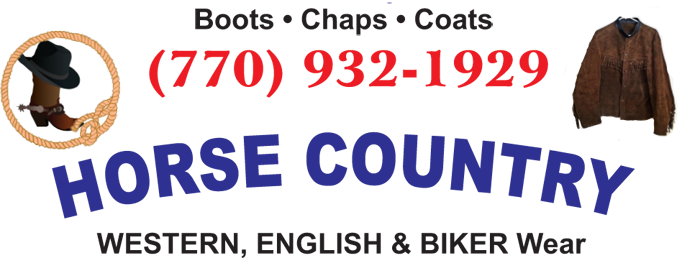What’s My Size?
What’s My Size?
When it comes to frequent questions in Horse Country, most of them have something to do with size. “Does this run true to size?” – “How do I determine my size?” – “How do I know if this is my size?”
One of the most important things to keep in mind when trying on an item is that size is relative.
You may try on a pair of boots in one brand and fit in an 11, but try on a pair in another brand and fit in a 10, or 10.5. Just because one pair of boots you have is a particular size, doesn’t necessarily mean that you will fit in any other boot labeled with the same size. So really the “fit” of the boot is what’s most important. Sizes are just a helpful guideline. (This can also be true for other clothing items.)
To begin to determine what the best fit for you may be in a boot, first look at your typical or average shoe size. From there—depending on the type of material the boot is made of—you usually will want to start by trying half a size down from your average. No, not up. Down.
The reason for this is that if you have a boot that is made of genuine leather then it is going to stretch; about half a size. Some exotic skins like goat, caiman/gator/croc or elephant tend to stretch very little, so make sure you determine your size or fit according to the material of your boot.
So you have the boot on. What do you do now?
Especially if you have never worn boots before, it is going to feel different and take some adjusting to.
So if you don’t know how it is supposed to feel, here are some checkpoints to follow:
- “How does it feel?” –This question may seem broad, and really… it is. The heel, toe, sides, and top of the boot should all feel a certain way. Here you just need to determine that the boot is the right fit by determining what you feel in each of these regions.
- Instep*—here, you should feel snug in the boot. If it is too loose or too tight, try a different size. Fit in this region may vary if you have a high or low instep or a flat foot.
- Toe—your toes should not feel cramped, but should have a comfortable amount of room.
- Sides*—here should be snug as well. The difference between snug and uncomfortable here can help determine if you may need a wider size, or different style of boot.
- Heel— your heel should not be tight up against the back of the boot but should have some space to move.
*amount of snugness for cowhide–amount necessary depends on the type of leather*
-
“How’s your placement?” – Essentially, this just checks to see that your foot is properly lining up with the boot. The widest part or the ball of your foot should line up with the widest part of the boot and the arch of your foot should line up with the arch of the boot.
-
“Where are your toes?”—We all know they should be attached to your feet, but where are they in the boot? Typically, your big toe will just reach or may partially enter into the toe region of the
boot called the “toe box”. This region is meant for the style of the toe on the boot, and is not meant to be filled with your toes. If you’re touching the very tip of the boot with your toe then you’ve gone too far and that size is probably too small for you.
- “Do you have heel slippage?” – The space you need in the heel assures that there is some slippage in the heel of the boot. In other words, your heel should move up ¼ to ¾ of an inch inside of the boot when you step. Over time the slippage will minimize, but it is necessary to always have some to prevent blisters.
After determining your size in a particular brand, you should be able to wear similar styles from that brand in the same size. Whenever trying a different brand or radically different style, you should use these same checkpoints to verify that you still have the proper fit.
